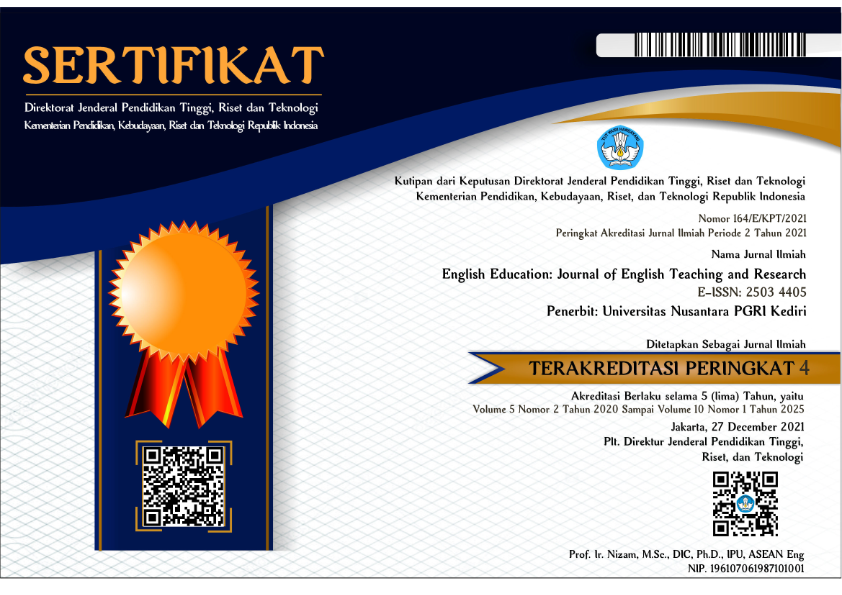The Effect of Roundtable Technique to the Students’ Reading Comprehension Achievement In Narrative Text To The Second Year Students MA HM Tribakti Kediri
DOI:
https://doi.org/10.29407/jetar.v1i1.275Abstract
Reading is one of the language skills which is very important to develop students’ knowledge in their studies. To make students understand what they read, it needs techniques. This study aims at finding the effect of roundtable technique to their reading ability. roundtable technique is a technique in which the students are in teams, write a response on their own piece of paper, pass their papers clockwise so each teammate can add to the prior responses. It is an experimental study using One-group Pretest-Posttest design. The data were taken from one class consisting 26 students of the elevent grade of MA HM TribaktiLirboyo Kediri. The data were collected using pre-test, treatment and then post-test. Then the data were analyzed using T-test formula. From data analysis, it can be found that the mean score of post-test (89,92) is higher than mean score of pre-test (58,07). The T-score (at the degree of freedom of 26 is 156,73, that is higher than the t-table at the level of significance of 1% 2,787 and 2,060 at the level of significance of 5%. So, the T-score (156,73) ≥ T-table, and the level of significance is 1 % (2,787). It means that it is very significant, so the H0 is rejected and Ha is accepted. It can be concluded that Roundtable Technique is effective to increases students’ reading comprehension. So it is recommended that Roundtable Technique can be used in teaching reading . The other writers are expected to conduct a better research about Roundtable Technique because small Roundtable Technique is effective to use.
Downloads
Downloads
Published
Issue
Section
License
Authors who publish with this journal agree to the following terms:
- Copyright on any article is retained by the author(s).
- The author grants the journal, the right of first publication with the work simultaneously licensed under a Creative Commons Attribution License that allows others to share the work with an acknowledgment of the work’s authorship and initial publication in this journal.
- Authors are able to enter into separate, additional contractual arrangements for the non-exclusive distribution of the journal’s published version of the work (e.g., post it to an institutional repository or publish it in a book), with an acknowledgment of its initial publication in this journal.
- Authors are permitted and encouraged to post their work online (e.g., in institutional repositories or on their website) prior to and during the submission process, as it can lead to productive exchanges, as well as earlier and greater citation of published work.
- The article and any associated published material is distributed under the Creative Commons Attribution-ShareAlike 4.0 International License








 Article template
Article template



